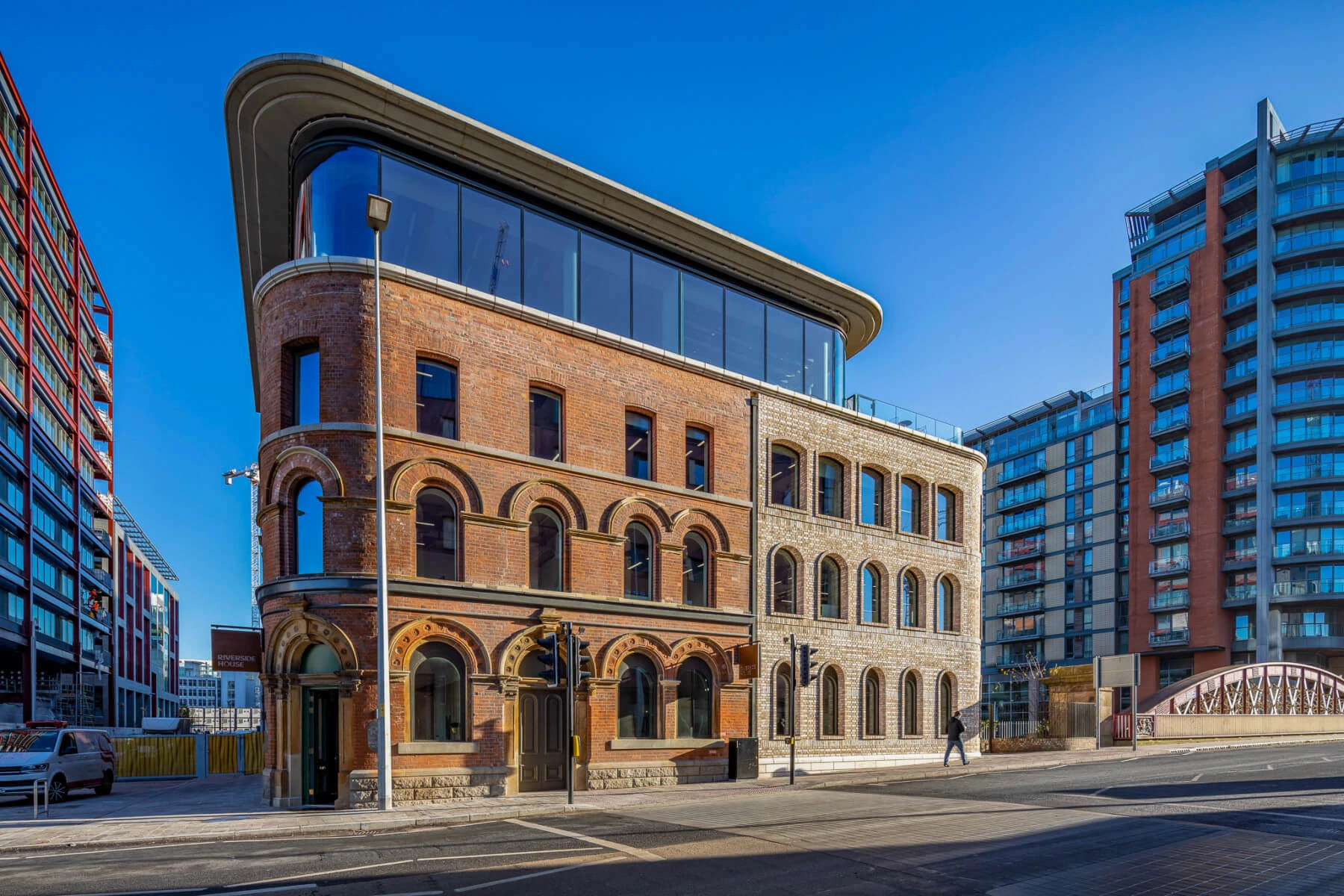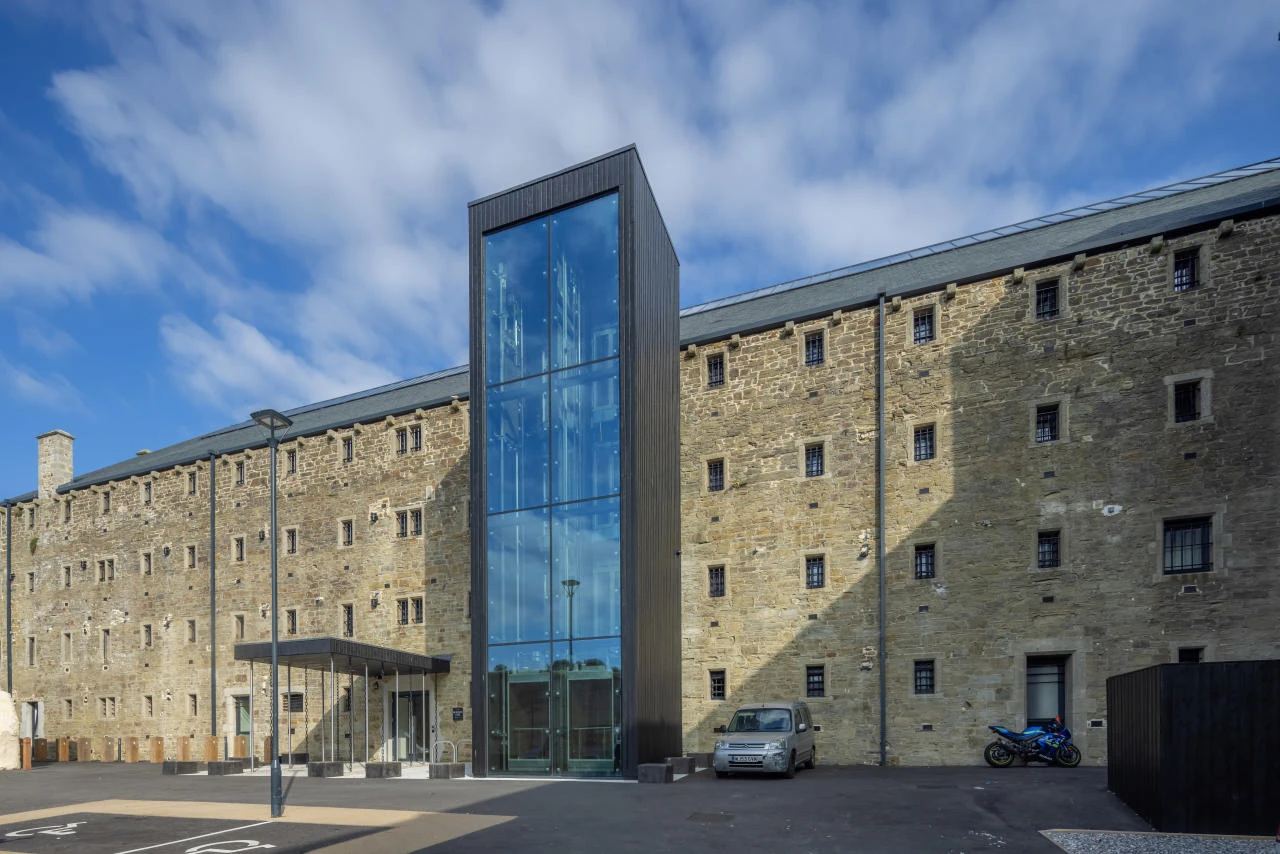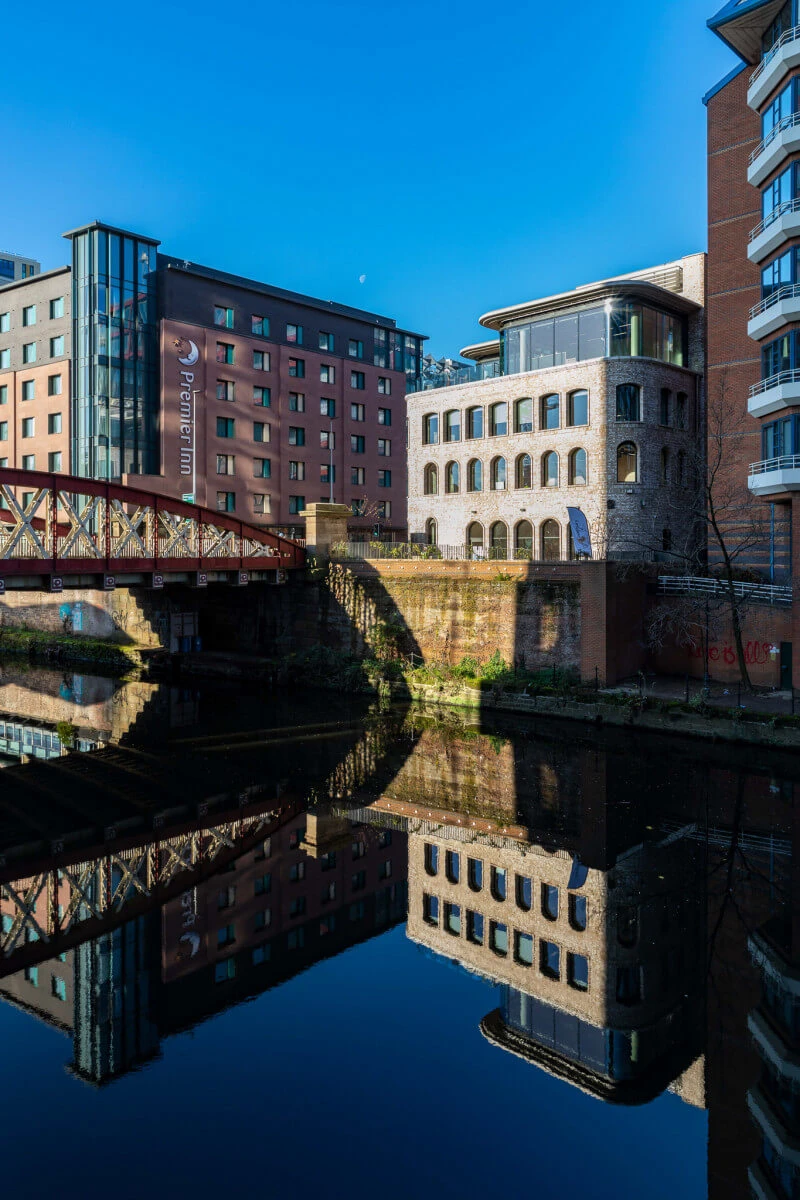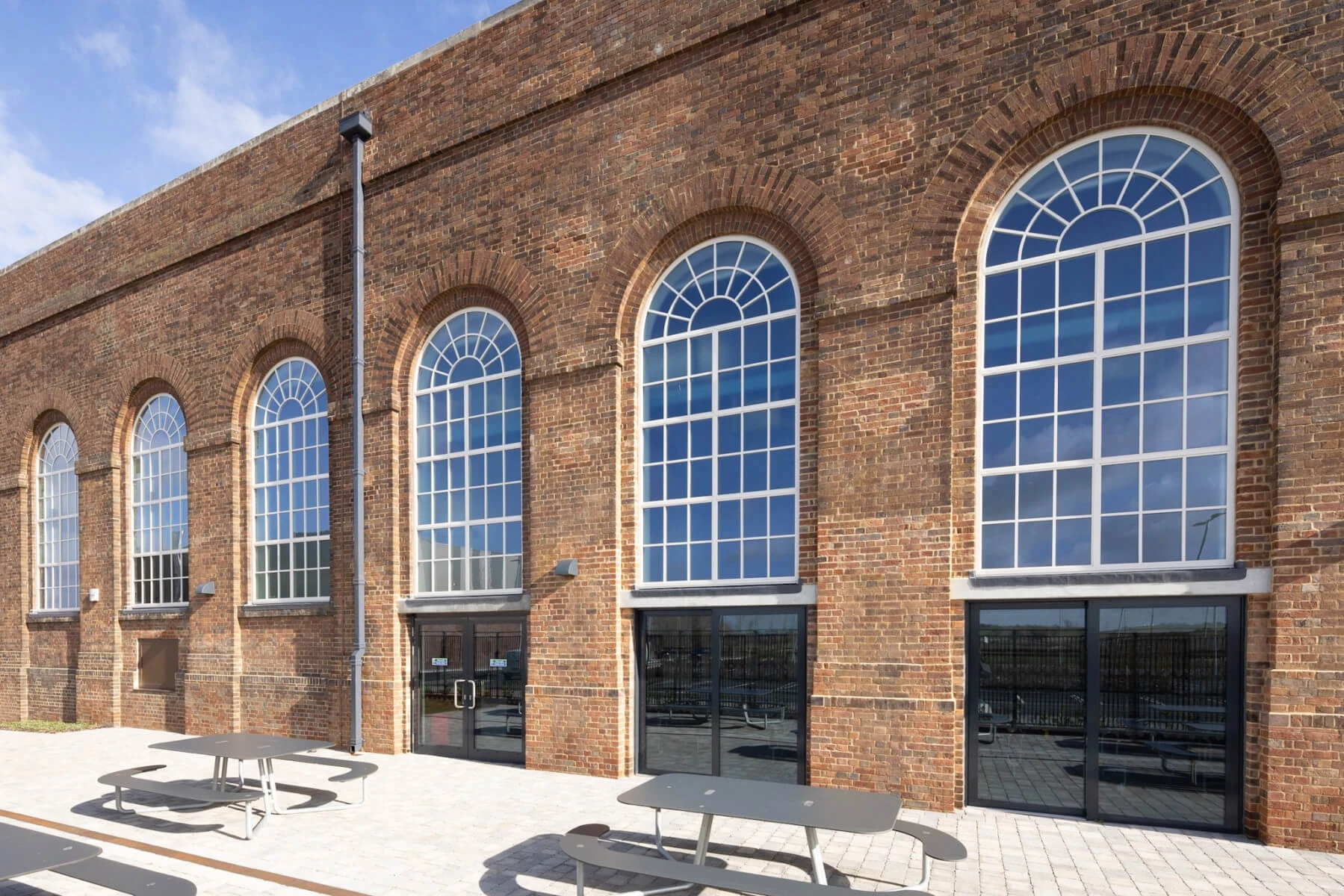Recycling building materials in construction – circular economy in practice

Riverside House, Salford, Wielka Brytania. United Kingdom. Applied systems: MB-45, MB-70, MB-78EI
Modern architecture demonstrates that the beauty of a building can blend seamlessly with functionality. Moreover, such structures can also be remarkably eco-friendly. This is not solely due to energy-efficient technologies but increasingly because of the sustainable use and recycling of construction materials.
Circular economy in construction
Until recently, the construction industry was often seen as a major contributor to climate change. Factors such as high greenhouse gas emissions, vast amounts of production waste, and the significant carbon footprint of individual projects have negatively impacted the environment. However, the construction sector of the 21st century has an opportunity to take a different route—one that's more sustainable in terms of technology and material utilization. Modern construction frequently employs materials like aluminum and glass, which have the crucial ecological advantage of being recyclable without loss of properties. The recycling of concrete rubble also continues to provide increased opportunities. The process of repurposing materials and utilizing them in future projects has opened a new chapter in construction. Embracing a circular economy and the growing use of recycled resources has become a priority.

Bodmin Jail Hotel, Bodmin, United Kingdom. Applied systems: MB-Slimline
Recycling and the future of construction
Why is recycling so vital in the construction industry? There are two key reasons. First, recycling greatly impacts the environment. Repurposing certain materials can lead to significant energy savings and thereby allow for more environmentally friendly practices during the production of building components. Aluminum, for example, used by Aluprof in manufacturing window, door, and façade systems, is highly durable and resistant to weather conditions. It is extensively used in construction and, being almost entirely recyclable, can save up to 95% of energy compared to manufacturing new aluminum.
The second important factor driving recycling's popularity in the sector is the conservation of natural resources. By reusing aluminum or glass in global projects, the demand for raw materials is significantly reduced, positively affecting both the actual state of natural reserves and the carbon footprint associated with their extraction. In construction, recycling isn't limited to reprocessing materials for reuse. Often, it also involves renovating existing structures. Not only does this give them a new lease on life, but it also elevates usage standards, such as adapting older structures to current requirements. An excellent example is the Riverside House in Manchester. Here, a 19th-century building has been enhanced with modern aluminum windows and facades from Aluprof.

Riverside House, Salford, United Kingdom. Applied systems: MB-45, MB-70, MB-78EI
This update ensures the brick structure not only fits beautifully into its surroundings but also meets the highest environmental standards, which translates to lower operational costs. The project utilized systems like MB-45, MB-70, and MB-78EI, known for excellent thermal insulation and superior noise reduction, enhancing user comfort.
The trend of revitalizing existing buildings is gaining popularity in Western Europe, where rapid urban development at the turn of the 19th and 20th centuries has left many intriguing sites waiting for a chance to be revived through sustainable technologies. Another notable example is the Bodmin Jail Hotel in the UK. Originally a prison, this structure has been transformed into a modern, architecturally fascinating hotel, featuring aluminum windows in the Aluprof MB-Slimline system.
Houlton School in Rugby, UK, showcases yet another Aluprof aluminum system, MB-70, utilized to restore the former building to its former glory.

Houlton School, Rugby, United Kingdom. Applied systems: MB-70
Let's build a better future
Recycling in the construction industry has various dimensions, but all share a common goal—caring for the environment. This forward-thinking approach acknowledges that today's actions are crucial for enhancing the quality of life for future generations. The construction industry's commitment to the circular economy was also reflected in this year's January BAU trade fair, which focused on this theme. Aluprof, participating in the event, supports sustainable development initiatives not only by utilizing recycled materials in its solutions but also by contributing its products to revitalization projects.
